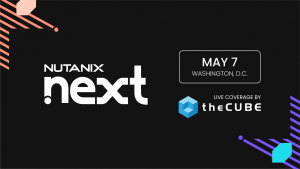Flash’s impact on hyperscale for the enterprise : #xflash CrowdChat
![]() The next generation of flash servers is a topic at the forefront of all CIO’s minds heading into 2014. Recently, we held a #xflash CrowdChat with industry leaders and analyst to discuss the impact of flash on hyperscale for the enterprise. During the event several important questions were covered, like: What is the difference and why should any care about All Flash Arrays vs Hybrid Arrays? Will xflash (flash as an extension of memory) be the most cost-effective way of providing that kind of low latency? Why is having very low latency IO essential for flash?
The next generation of flash servers is a topic at the forefront of all CIO’s minds heading into 2014. Recently, we held a #xflash CrowdChat with industry leaders and analyst to discuss the impact of flash on hyperscale for the enterprise. During the event several important questions were covered, like: What is the difference and why should any care about All Flash Arrays vs Hybrid Arrays? Will xflash (flash as an extension of memory) be the most cost-effective way of providing that kind of low latency? Why is having very low latency IO essential for flash?
Dave Floyer, CTO of Wikibon, discussed these trends in his Enabling Real-time Big Data Processing with xflash – Very Low Latency Server SANs piece, saying “CEOs and CIOs should understand the business potential of xflash systems to provide low-cost high-function alternatives to traditional IT systems, and ensure that strategic plans are in place to adopt such technologies as quickly as possible.”
Here is a recap of the #xflash CrowdChat:
What is the difference and why should any care about All Flash Arrays vs Hybrid Arrays? CIOs want to… #xflash via https://t.co/VPfRdCUM4f
— John Furrier (@furrier) December 5, 2013
And the conversation…
xflash (flash as an eXtension of memory) is likely to be the most cost-effective way of providing tha… #xflash via https://t.co/Z0SfU9FOIP
— David Floyer (@dfloyer) December 5, 2013
…which proceeds here and here. In the follow-through of Floyer’s first point, a useful dialogue takes place:
David Floyer: However, for future designs off applications where analytics are integrated with transactions it will be an essential ingredient to have very low latency IO
Stu Miniman: there are a number of solutions (@pernixdata @qlogic @proximaldata) that network flash, how is this different?
Ed Walsh: It seems a great opportunity for app vendors to optimize data placement since the app can intelligently anticipate needs.
Ed Walsh: Do you anticipate future application designs will intelligently leverage a relatively small pool of high performance storage and bulk tier of storage with rich data services?
David Floyer: Ed – absolutely – a key requirement is the ability to ensure that active data is in the flash, and that there is an efficient way of taking data from the active layer to a lower-cost inactive layer. The key to this is an meta-data architecture.
David Vellante: that’s a great question – will those data services by SW-defined and independent of media or will they be “superglued” to the device?
A question for readers
Wikibon’s Stu Miniman ends the #xflash CrowdChat with a good question we pose to you, the SiliconANGLE audience:
We’ve seen huge growth in hybrid flash arrays, big launches of all flash arrays – can a solution be b… #xflash via https://t.co/XZ1MGDArLY
— Stuart Miniman (@stu) December 5, 2013
Join us for the next CrowdChat – see here for details.
A message from John Furrier, co-founder of SiliconANGLE:
Your vote of support is important to us and it helps us keep the content FREE.
One click below supports our mission to provide free, deep, and relevant content.
Join our community on YouTube
Join the community that includes more than 15,000 #CubeAlumni experts, including Amazon.com CEO Andy Jassy, Dell Technologies founder and CEO Michael Dell, Intel CEO Pat Gelsinger, and many more luminaries and experts.
THANK YOU















